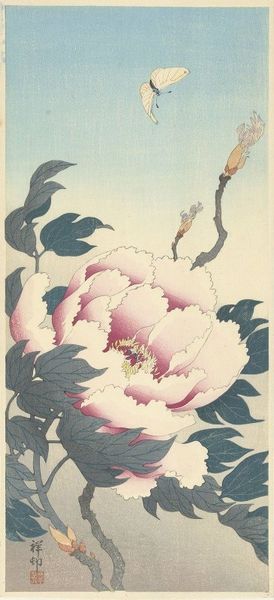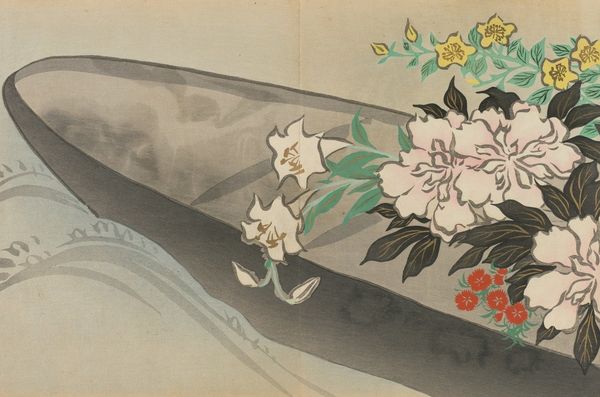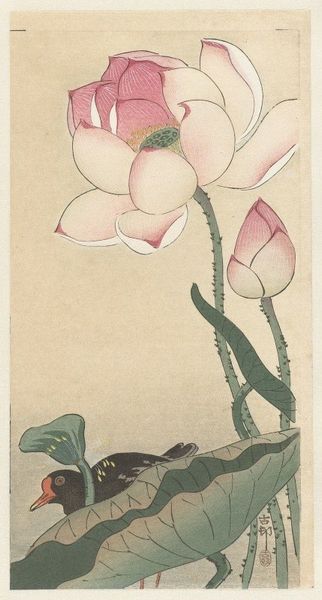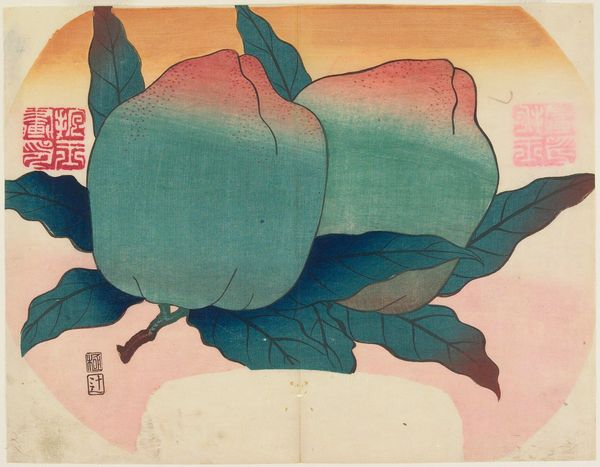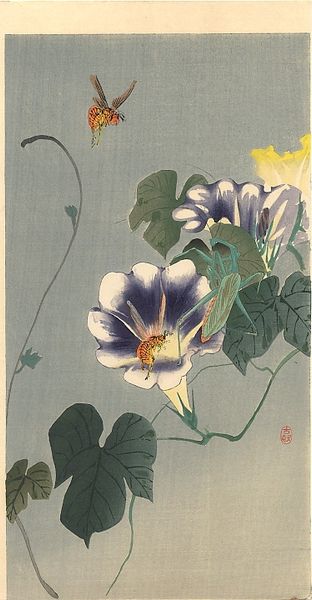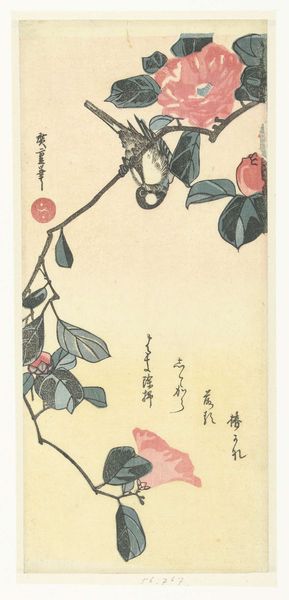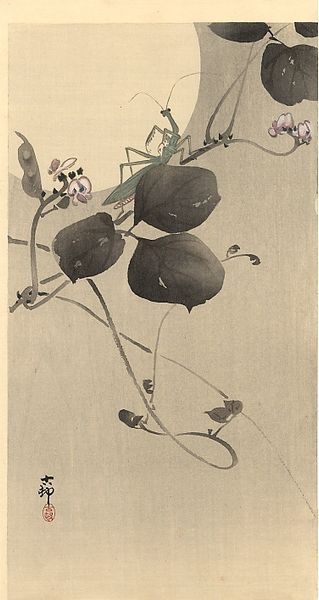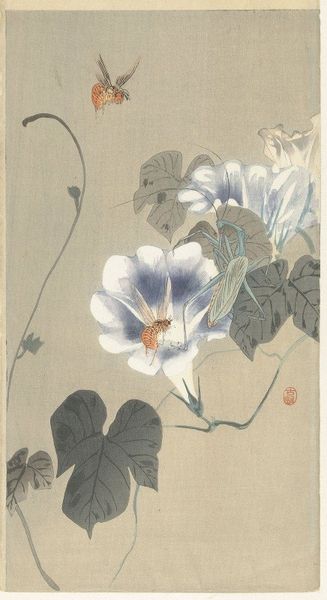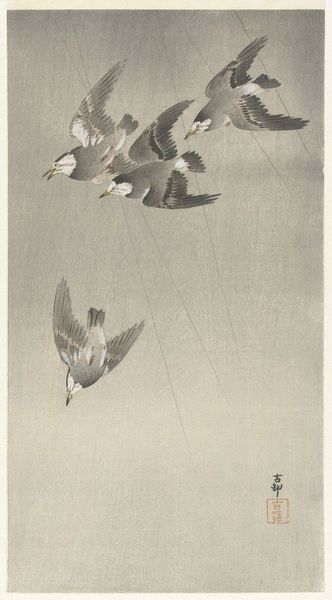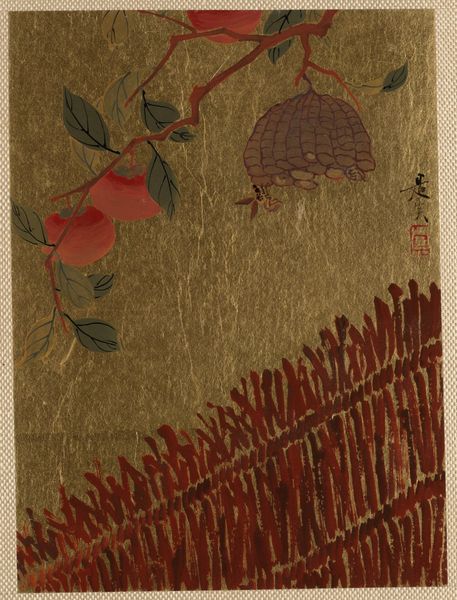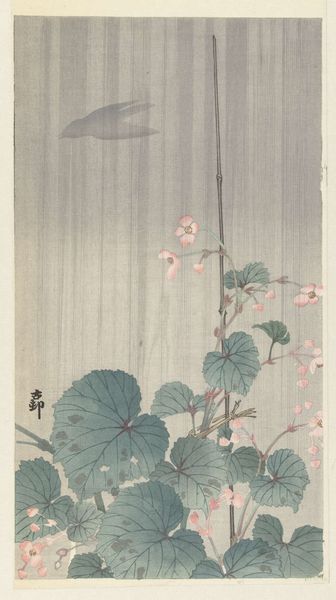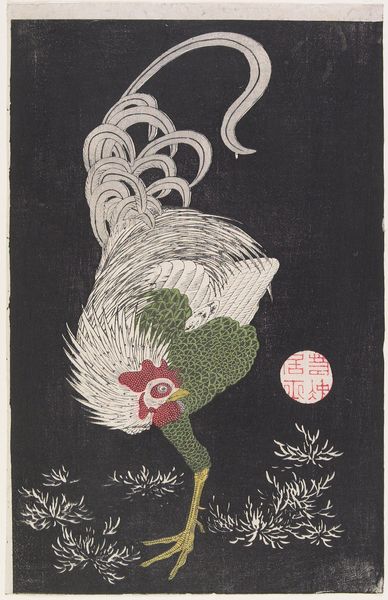
painting, impasto, woodblock-print
#
naturalistic pattern
#
organic
#
painting
#
asian-art
#
landscape
#
ukiyo-e
#
impasto
#
woodblock-print
#
flower pattern
#
line
#
decorative-art
#
decorative art
Copyright: Public domain
Curator: Immediately, I’m struck by how stark and isolated the elements are. A solitary swallow diving toward a single camellia bloom, all set against such a solid black field. Editor: Yes, it's quite dramatic, isn't it? We’re looking at "Swallow and Camellia," a work often attributed to Ito Jakuchu. It's a prime example of Japanese woodblock printing and demonstrates how such artwork utilizes flat areas of color. Curator: What fascinates me is the way this image resonates through time. Swallows, universally symbols of spring and renewal, juxtaposed with the camellia, a flower that blooms even in the harsh winter. The continuous cycles embedded into natural imagery echo the rhythms of our own existence. Editor: And those cycles are politically loaded! Think of the economic systems built on the backs of predictable agricultural yields that shape societal structures. Ukiyo-e prints, while seemingly focused on transient beauty, were affordable art for a burgeoning merchant class that threatened traditional hierarchies. So the image carries both natural and societal references. Curator: Exactly! There’s also the contrast of the ephemeral with the enduring. The fleeting nature of the bird's flight is caught in a moment before it touches the lasting presence of the camellia, which continues to return year after year. Even the single seal reinforces this sense of time, signifying authenticity through generations of owners. Editor: Right, and beyond the immediate appeal of the naturalistic pattern, it speaks to the shifting social landscape of the Edo period, where new art forms democratized representations of the natural world. Even now, it suggests nature isn't some neutral zone, but an arena shaped by politics and human agendas. Curator: I agree; the picture also has something to do with a balance of darkness and light—the promise of warmer weather and brighter days, contained in a somber palette. Editor: So in a way, it speaks to the tension between potential and lived experience? I like that reading, it makes me wonder who the camellia is *for*, and what impact the swallow's attention may or may not have on the greater political system that enables that privilege. Curator: And this consideration makes this imagery even more impressive! Thank you! Editor: Yes, this work contains multitudes and provides a way into cultural memory and political dynamics. A powerful convergence.
Comments
No comments
Be the first to comment and join the conversation on the ultimate creative platform.
